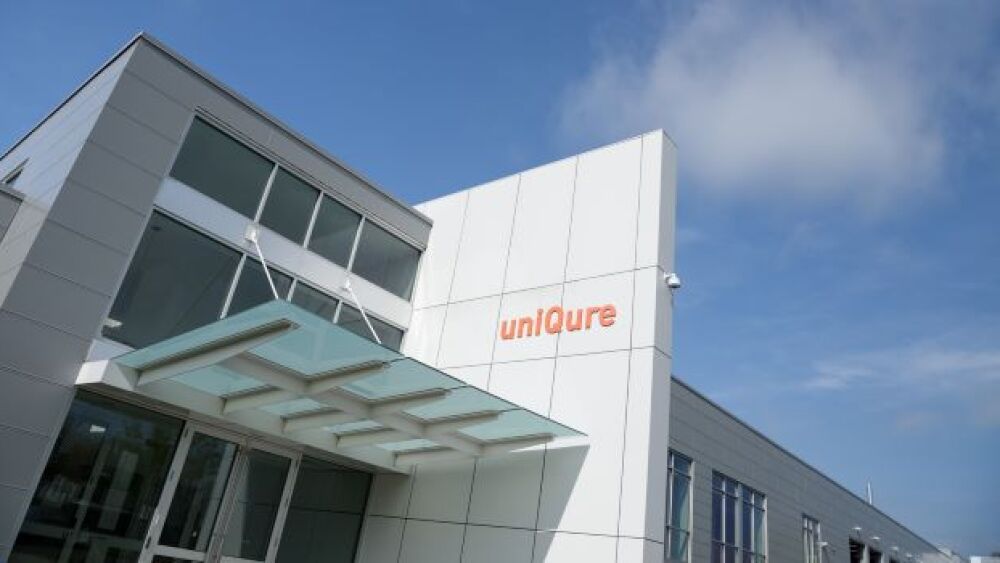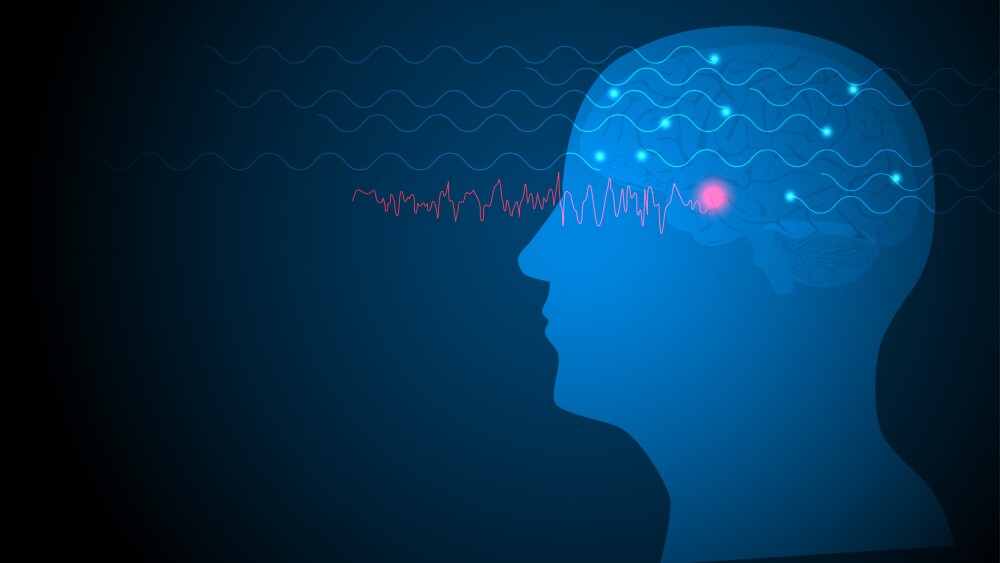uniQure gave a 12-month update on AMT-130, the first-ever AAV gene therapy for HD to enter clinical trials. BioSpace spoke with the company’s president of R&D, Dr. Ricardo Dolmetsch.
Courtesy of uniQure
The Huntington’s drug development space has been fraught with failure in recent years. From Roche and Ionis’s Phase III trial of antisense oligonucleotide (ASO) tominersen that not only failed to replicate earlier clinical findings but actually led to worse outcomes to WAVE’s ASOs that failed to have any impact at all, it hasn’t been a good couple of years. But recently, there have been new flickers of hope.
Last month, Annexon Biosciences announced that ANX005, which tackles Huntington’s disease (HD) by targeting complement component 1q (C1q), safely stabilized disease progression in a Phase II clinical trial. Even more noteworthy, the drug appeared to be more beneficial for patients with more aggressive disease at baseline.
Also in June, uniQure gave a 12-month update on AMT-130, the first-ever adeno-associated virus (AAV) gene therapy for HD to enter clinical trials. Data from six patients treated with low-dose AMT-130 in the company’s Phase I/II trial showed a 53.8% mean reduction of mutant huntingtin HTT (mHTT) in the cerebral spinal fluid (CSF).
Mutant HTT is the bad form of the huntingtin protein coded for by the HTT gene (there is a good kind, and that’s important). The mutant form is the culprit in HD, a devastating, hereditary, neurodegenerative disease with symptoms spanning the physical, cognitive and emotional. HD typically hits in the prime of patients’ lives – the 30s and 40s – and is ultimately fatal.
Safety First
Importantly, the gene therapy was generally well-tolerated with no significant safety signals.
“This idea that you can use RNAi (RNA interference) to suppress a gene has been around for a long time…but it took us a long time to get to a point where we could do it safely,” Dr. Ricardo Dolmetsch, Ph.D., uniQure’s president of R&D told BioSpace. Once uniQure reached this milestone, “the question was, where were we going to apply it first?” The company ultimately decided to take a shot at Huntington’s.
“We developed a technology that allows us to take an adeno-associated virus and introduce it into the brain, and then use something called a microRNA to reduce the production of the toxic protein,” Dolmetsch explained. “AMT-130 has this specific microRNA that targets exon 1 of the huntingtin gene. That’s important because the gene has an expansion in exon 1, and sometimes only the first exon gets produced and that one is particularly toxic. So it reduces the production of the bad huntingtin as well as any other pieces that are particularly deleterious.”
Dolmetsch laid out the ultimate objective.
“The underlying value proposition is that a one-time surgery will allow us to reduce the production of the mutant protein in the region of the brain that degenerates first, which is the striatum,” he said.
He further explained that “It’s the degeneration of that cluster of neurons, situated in the subcortical basal ganglia of the forebrain, that sparks the onset of all of the hallmark HD symptoms. It leads to the psychiatric symptoms because these are the cells that have the dopamine receptors… but it also underlies the motor symptoms because dopamine also plays a key role in controlling movement.”
AMT-130 is deposited through a “very thin catheter” into the striatum and then, through a process called convection enhancement, uniQure expects it to spread to other affected parts of the brain.
Both of the company’s low- and high-dose trials involve patients at the earliest stages of HD. Dolmetsch explained the rationale for this.
“There’s no bringing back the neurons, so we would like to be able to prevent the neurons from degenerating and rescue the neurons that are sick to see whether we can somehow recover function.” Also, he added, “we want to preserve people at a point in their lives when they can still make the most of it.”
The company is running these trials both in the European Union (open label) and United States (placebo-controlled). Patients who receive a placebo surgery will have the opportunity to switch to AMT-130 after a year.
A Deeper Dive
The positive safety data gleaned from the Phase I/II trial is a key learning point for uniQure.
“We’re really the first company to have dosed any significant number of patients with an AAV gene therapy in the brain, so…all kinds of things could have happened,” Dolmetsch said. Fortunately, he reported that there were no serious adverse events related to the therapy.
In terms of impacting the target, he said the 53.8% mHTT reduction “looked generally encouraging.”
The pivotal question, Dolmetsch said, is “if you reduce the toxic protein, and you don’t make people sick in other ways because [the therapy] is relatively safe, will you have an effect on the progression of the disease?”
There is a general understanding, he said, if you were to prevent the production of toxic Huntingtin in a baby, they would not develop HD, but “the real question is, can you have an impact when people are already sick?” The answer, he acknowledged, is “we don’t really know.”
UniQure might have more insight, however around the middle of 2023 when it expects to have 24-month data from the six patients treated in the low-dose cohort. At this point, the company will be able to provide a clinical update regarding potential changes in the motor scores of these individuals. Around the same time, uniQure will have 12-month data from the high-dose cohort. Low- and high-dose data from the European trials are then anticipated in late 2023 and early 2024 respectively. “If the data looks phenomenal, then we would, of course, go and talk to regulators,” Dolmetsch said.
Do ASOs Still Have Potential in HD?
Dolmetsch shared his thoughts on the relative potential of ASOs in treating HD.
“My view is that tominersen probably failed because of a combination of poor penetration in the deep areas of the brain that are the main sites of neurodegeneration in patients with HD, and toxicity associated with that specific type of ASO,” he said. The Wave ASOs failed because they were not taken up by the tissues adequately and therefore didn’t reduce the concentration of Huntingtin.”
Regarding toxicity, Dolmetsch said, “They [Roche] discovered that if they dosed them as often as they wanted to [in order] to get the maximum amount of lowering, people were getting hydrocephalus (the accumulation of CSF), so they dosed even less frequently.”
An alternative hypothesis has been floated that tominersen wasn’t effective because it knocked down both mutant huntingtin and wild-type huntingtin, which is neuroprotective.
Dolmetsch, however, said this is unlikely to be the reason. “It turns out that most people are just completely normal with 20% huntingtin function…I don’t think an ASO can really knock anything down more than about 20 or 30%.”
So, is all hope lost for ASOs in this space? Maybe not. In Cambridge, MA., WAVE continues to develop WVE-003, a PN-modified silencing oligonucleotide. The company’s two failed assets each targeted a different single nucleotide polymorphism (SNP) on the mutant HTT gene, intending to block mHTT protein production. The remaining HD candidate, for which Takeda holds a 50/50 option, targets a different SNP with chemical modifications to increase the drug’s potency and ability to reach its targets. Data from a Phase I/IIa trial is expected this year.
Several Shots on the Target
And hope is certainly not lost in this space overall. Helmed by renowned HD researcher Dr. Michael Hayden, Prilenia Therapeutics is in Phase III development with pridopidine, a first-in-class selective and potent Sigma-1-receptor agonist with neuroprotective properties. Pridopidine received Fast Track designation from the FDA in November 2021. In Phase II, the drug demonstrated maintenance of functional capacity, an effect the company said was particularly prominent in early-stage patients.
Annexon’s ANX005 targets C1q, the initiating molecule of the classical complement pathway. In neurodegenerative diseases, it inappropriately recognizes and tags functioning synapses by activating and amplifying complement components that cause neuroinflammation, synapse damage and eventually, synapse loss. ANX005 is designed to stop this process.
Earlier on in the discovery phase, biomedical innovator bit.bio recently launched its HD cell model to accelerate drug discovery and screening for patients. The company’s ioGlutamatergic Neurons HTT50CAG/WT cells are neurons that carry the disease-relevant 50 CAG trinucleotide repeat expansion associated with HD, providing a scalable model that replicates the disease in vitro. This genetically-matched control enables researchers to identify and investigate the effects of the CAG trinucleotide repeat expansion in HD.
Back at uniQure, there are a couple of reasons why Dolmetsch likes his company’s chances with AMT-130.
“There’s no question that we’re hitting the right cells. We are delivering it right there; we can actually watch it on an MRI and show that we are getting our gene therapy to the striatum and to all the deep brain structure. So we know for sure that we are lowering stuff there,” Dolmetsch shared. “Also, we think it’s comparatively well-tolerated… we don’t think there’s a ton of [toxicity], so I think that will increase our chances of seeing something.”
Being a pioneer in a therapeutic space is exciting, but certainly not without its challenges. As Dolmetsch said, “It’s totally new, with all the pluses and minuses in that.”







